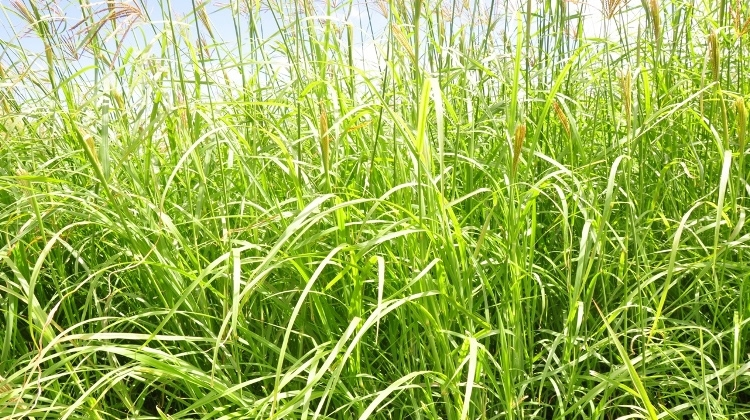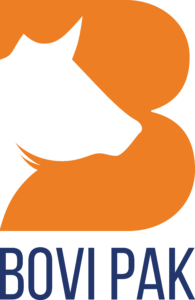Contact Us
+92 3000 116111How Rhodes Grass Hay is Harvested (Step by Step Guide)
High-quality fodder for dairy, beef, goats, sheep, camels & horses – ensuring better milk yield, healthy growth, and profitable farming.
- Finest Quality Guaranteed
- Global Shipping Coverage
- Certified & Tested Fodder
For dairy cows, beef cattle, camels, horses, goats, and sheep, Rhodes Grass Hay is one of the most widely used feed crops in the world. Because of its long fibers, excellent digestibility, and balanced nutrition, it is particularly popular in areas like the Middle East, Asia, and Africa where cattle production mostly relies on imported feed.
But have you ever wondered how Rhodes Grass Hay is harvested and prepared before it reaches your farm or feeding facility? Below is a step-by-step breakdown of the process, from the field to your storage barn along with why choosing a reliable supplier matters for consistent quality.

Rhodes Grass Hay Harvesting Process – From Field to Bale
1. Land Preparation & Soil Health
Before planting, farmers ensure the soil is well-drained and moderately fertile. Rhodes grass thrives in sandy loam soil with a pH range of 5.5–7.5. At BoviPak, we source hay only from fields where soil fertility and organic matter are maintained through natural composting and proper irrigation cycles.
- Deep tilling improves aeration and water penetration.
- Fertilizers rich in nitrogen and potassium are applied before sowing.
- Fields are laser-leveled to ensure even irrigation and uniform growth.
2. Growth & Irrigation Cycle
Once Rhodes grass is established, it grows rapidly under warm climates. Regular irrigation is key to maintaining leaf density and protein content. The first harvest is typically ready after 70–90 days of planting.
- Drip or flood irrigation every 7–10 days depending on soil moisture.
- Weed control through manual or mechanical means for better yield.
- Continuous monitoring ensures uniform height and consistent texture.
3. Cutting & Harvesting Stage
Timing the cut determines the quality of Rhodes hay. The crop is usually harvested at 50% flowering for a perfect balance of protein and fiber. BoviPak ensures hay is cut early in the morning to preserve nutrients and prevent moisture loss.
- First cut is coarser and high in fiber – ideal for camels and horses.
- Second cut is leafier and protein-rich – perfect for dairy farms.
- Modern mower-conditioners are used for even cutting and quick drying.
4. Sun Drying & Moisture Control
After cutting, Rhodes grass is naturally sun-dried for 2–3 days until the moisture level drops below 15%. Proper curing ensures that hay doesn’t mold during storage or shipment.
- Windrows are turned 2–3 times to dry evenly.
- Hay moisture meters are used for precise readings.
- Color retention (bright green) indicates nutrient preservation.
5. Baling & Packaging
Once dried, the hay is baled using hydraulic or automatic baling machines. BoviPak offers multiple bale types for different market requirements.
- Small square bales (20–25 kg)
- Large square bales (400–500 kg)
- Compressed bales (for export containers)
Each bale is tightly packed to reduce air gaps and ensure durability during overseas shipping.
6. Storage & Export Readiness
Our team ensures every bale is stacked under covered sheds to prevent exposure to rain or sunlight. Before export, moisture and color are rechecked, and the bales are wrapped in protective sheets for long-term stability.
BoviPak ships directly through Jebel Ali Port (UAE) and Karachi for international orders to Saudi Arabia, Oman, Qatar, and other Gulf countries.
Quality Assurance by BoviPak
- Clean, dust-free hay with optimal moisture levels.
- Tested for protein, fiber, and digestibility before dispatch.
- Fumigated and inspected for export compliance.
- Shipment tracking and fast delivery to Gulf ports.
We deliver consistency and freshness — from the field to your farm.
FAQs – Rhodes Grass Harvesting & Supply
When is Rhodes Grass ready for the first harvest?
Typically, the first cut is ready 70–90 days after sowing under optimal moisture and sunlight conditions.
What is the ideal moisture level for hay export?
Moisture levels between 12–15% are perfect to prevent mold and retain freshness.
How do you maintain hay color during drying?
By cutting in the early morning and drying under mild sun exposure, the natural green hue is preserved.
Do you offer compressed bales for container shipments?
Yes, BoviPak provides compressed Rhodes hay bales ideal for 20ft and 40ft containers.
Can I visit the field before confirming a bulk order?
Absolutely. We welcome buyers to inspect the harvest site and baling process before export confirmation.
🌿 Final Word
The Rhodes Grass Harvesting Process at BoviPak is designed to maintain the highest quality from soil preparation to export. Every bale reflects our dedication to freshness, nutrient value, and customer satisfaction.
For high-quality Rhodes Grass Hay in first or second cut, contact us today to get the latest Rhodes hay price per ton for UAE, Saudi Arabia, Qatar, and Oman.
BoviPak – Rhodes Grass Hay Supplier
Address: Dubai Plaza Office #19, Main Multan Road, Muzaffar Garh, Punjab, Pakistan
Phone: +92 3000 116111
Email: info@bovipak.com
Lorem ipsum dolor sit amet consect etur adi pisicing elit sed.
Dubai Plaza Office #19 Main Multan road Muzaffar Garh, Punjab Pakistan
Newletter
Sign up now to get daily latest news & updates from us

